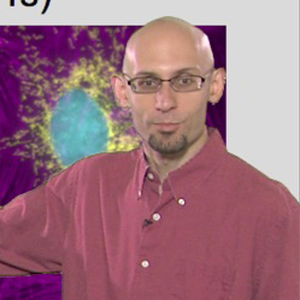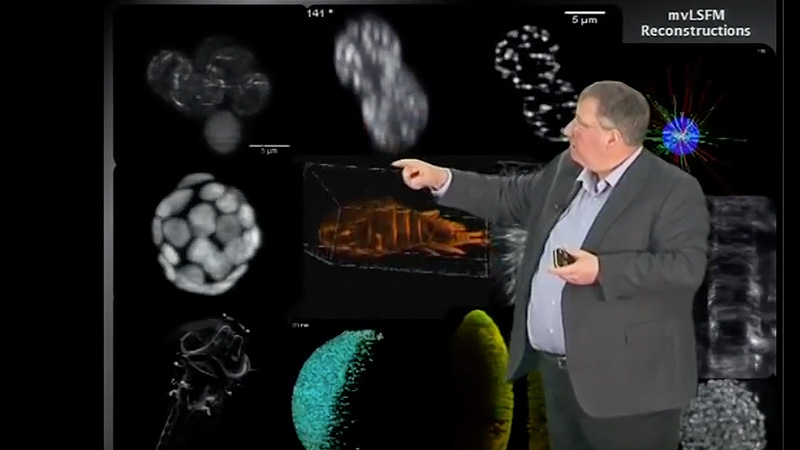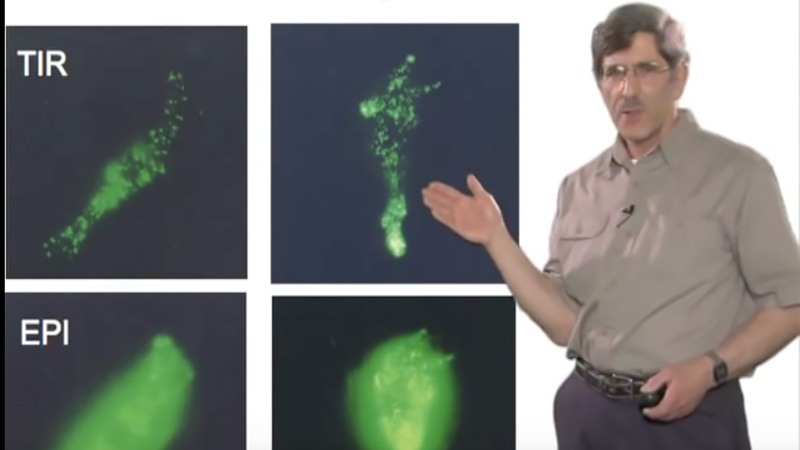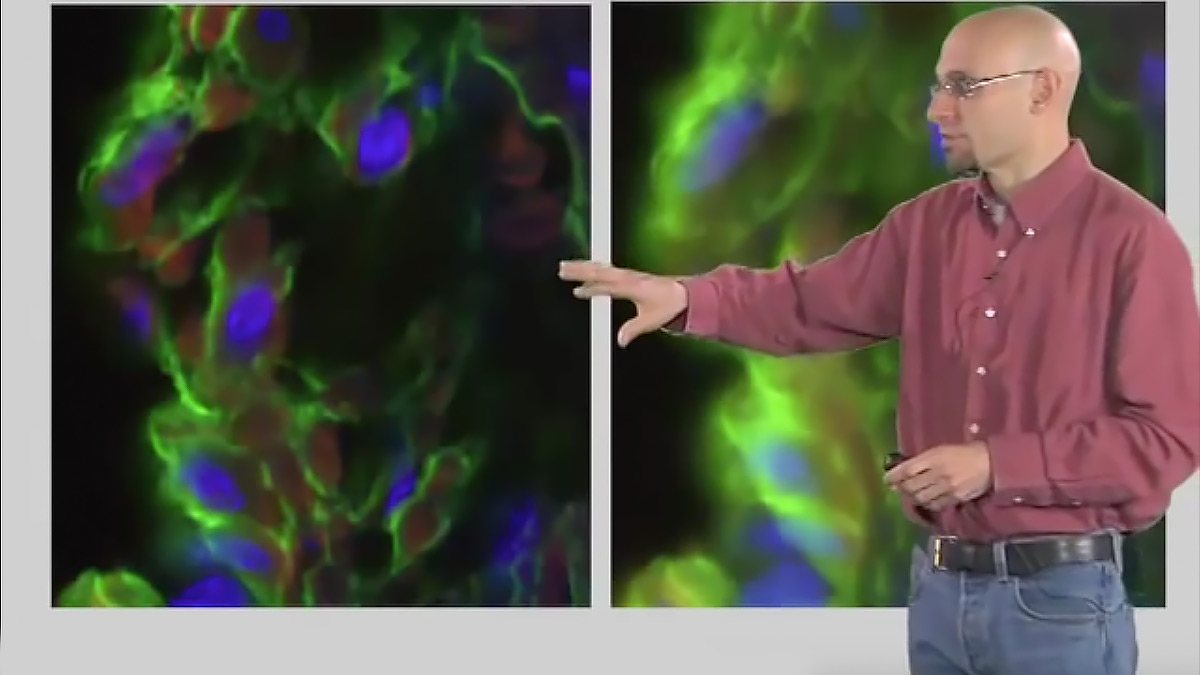Talk Overview
This talk introduces two-photon microscopy which uses intense pulsed lasers to image deep into biological samples. It can be used for imaging thick tissue specimens or even imaging inside of live animals.
Questions
- Explain why only red light is emitted through thin skin when a flashlight is shone on it.
- What is clearing and what is it used for?
- What are the advantages of using two infrared photons instead of one blue photon in two-photon microscopy to excite a green-light emitting molecule?
- Why does two-photon microscopy not require a pinhole (select all that apply)?
- Because the emitted light in two-photon microscopy does not scatter
- Because there is no out-focus light in two-photon microscopy
- Because two-photon microscopy gives rise to localized excitation
- None of the above
- What would be the result of using a pinhole in two-photon microscope?
- The detected image would include less background signal
- The detected image would be dimmer
- None of the above
- Do you agree or disagree with this statement? “In two-photon microscopy, one unique laser setting can be used to simultaneously excite both the Alexa Fluor 488 (green) and Alexa Fluor 568 (orange) dyes.” Explain why you agree or disagree.
Answers
View AnswersSpeaker Bio
Kurt Thorn

Kurt Thorn is an Assistant Professor of Biochemistry and Biophysics at UCSF and Director of the Nikon Imaging Center – a facility that provides cutting edge light microscopy equipment to UCSF researchers. Kurt can be followed on his blog at http://nic.ucsf.edu/blog/. Continue Reading








D says
Hi Kurt,
Thank you for the awesome video which comprehensively explains the principles behind the two-photon microscopy imaging technique!
Is there a download link for the slides used in this video?
Thanks,
D
Michal Jirak says
Great explanation, thank you.